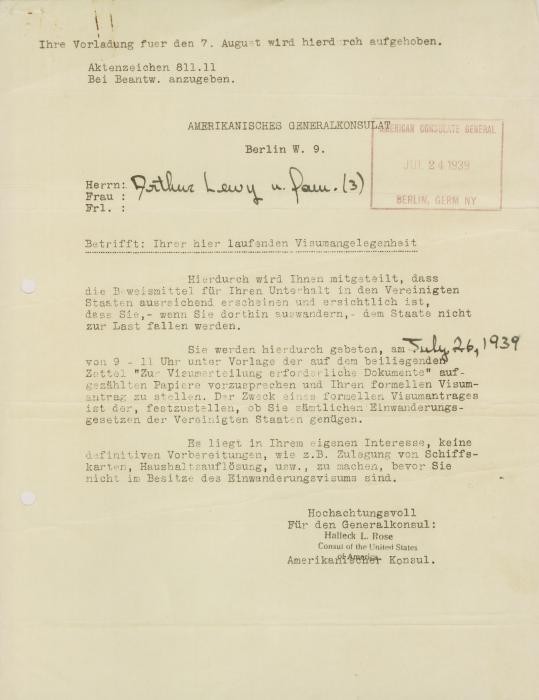cross‐posted from: https://lemmygrad.ml/post/5006919
It would be an anachronistic exaggeration to say that antisemitism is fascism. That being said, since the 1910s there has been a correlation between the two, which is one of the reasons why we as lower‐class gentiles should care about antisemitism (and it is one of the reasons why I resent Zionists for abusing accusations thereof). When we witness severe or persistent antisemitism, we find out, like a bloodhound sniffing a trail, that neofascism is not far off.
Quoting Jacques R. Pauwels’s The Myth of the Good War, pages 37–8:
During the 1930s, then, all too many Americans did not object to the racism of the [Third Reich], as was revealed by “polls showing the affinity of American with German notions of racial hierarchy.”²² Neither was the anti‐Semitism of Hitler and his fascist cronies a big issue in America. Anti‐Semitism was rather fashionable in the twenties and thirties not only in Germany, but in many other countries, including the United States. Many Americans were anti‐Semitic themselves and were therefore tolerant of, if not sympathetic to, [Fascist] anti‐Semitic actions.²³
American industrialists and bankers, and the country’s élite in general, did not constitute an exception to this general rule. In the exclusive clubs and fine hotels they patronized, for example, Jews were usually not admitted. America’s most notorious anti‐Semite was the industrialist Henry Ford, an influential man who admired Hitler, supported him financially, and inspired him with his anti‐Semitic book, The International Jew, which had been published in the early twenties.
The admiration was mutual; the Führer kept a portrait of Ford in his office, acknowledged him as a source of anti‐Semitic inspiration, and in 1938 honoured him with the highest medal that [the Third Reich] could bestow on a foreigner. Ford also funded the pro[fascist] propaganda campaign waged vigorously throughout the United States by the famous aviator Charles Lindbergh, a friend of Göring.
Another fiery and influential American anti‐Semite was Charles E. Coughlin, a Catholic priest from Michigan, who in daily radio broadcasts incited his millions of listeners against a Judaism that he equated with Bolshevism, precisely as Hitler did. As for America’s businessmen, a large number of them, possibly a majority, thoroughly despised President Roosevelt’s policy known as the New Deal, which they condemned as “socialist” interference in the country’s economy.
The anti‐Semites concluded that it was part of a Jewish plot, and they denigrated the New Deal as the “Jew Deal.” They similarly considered the president to be a cryptocommunist and therefore an agent of the Jews, as a crypto‐Jew, and they frequently referred to him as “Rosenfeld.”²⁴ American bankers visiting [the Third Reich] in June 1934 complained to the ambassador of their country in Berlin that the Roosevelt administration was “full of Jews.”²⁵
Readers shall no doubt be tempted to compare accusations of Roosevelt’s supposed Jewish origins to the infamous ‘birther’ conspiracy theory, which alleged that Barack Obama was born in Kenya and therefore had no legitimate claim to Presidency.
As we shall now see, however, Roosevelt engaged in his own casual antisemitism, which would not prevent extremer antisemites from accusing him of being ‘Jewish’ anyway. (This is perhaps comparable to how Obama’s inability to improve living standards for Afro‐Americans would not shield him from white supremacist anger either.) Quoting David Swanson’s Leaving World War II Behind, chapter 2:
Antisemitism was mainstream in U.S. and British culture at the time of WWII and in the decades leading up to it, including among élites and top elected officials. Franklin Roosevelt in 1922 had taken it upon himself to convince the Harvard Board of Supervisors to gradually reduce the number of Jews admitted to Harvard University.
[…]
In “The Jewish Trail of Tears: The Évian Conference of July 1938,” Dennis Ross Laffer concludes that the conference was set up to fail and put on for show. Certainly it was proposed by and chaired by a representative of U.S. President Franklin Roosevelt who chose not to make the necessary efforts to aid Jewish refugees, before, during, or after the conference.²⁴
[…]
Five days after Crystal Night, President Franklin Roosevelt said he was recalling the ambassador to [the Third Reich] and that public opinion had been “deeply shocked.” He did not use the word “Jews.” A reporter asked if anywhere on earth might accept many Jews from [the Third Reich]. “No,” said Roosevelt. “The time is not ripe for that.”
Another reporter asked if Roosevelt would relax immigration restrictions for Jewish refugees. “That is not in contemplation,” the president responded. Roosevelt refused to support the child 36 refugee bill in 1939, which would have allowed 20,000 Jews under the age of 14 to enter the United States, and it never came out of committee. Senator Robert Wagner (D., N.Y.) said, “Thousands of 37 American families have already expressed their willingness to take refugee children into their homes.”
First Lady Eleanor Roosevelt set aside her antisemitism to support the legislation, but her husband successfully blocked it for years. America rejected the 1939 Wagner‐Rogers bill to admit more Jewish and non‐Aryan refugees, but passed the 1940 Hennings Bill to allow unlimited numbers of British Christian children into the United States.³⁸
Swanson presents more evidence (from the same chapter) that Roosevelt’s casual antisemitism was mainstream in his empire:
U.S. immigration policy, crafted largely by antisemitic eugenicists such as Harry Laughlin — themselves sources of inspiration to [Fascist] eugenicists — severely limited the admission of Jews into the United States before and during World War II.¹⁸ Some segment of the U.S. population is aware of this, I’ve found.
The U.S. Holocaust Museum’s website informs visitors: “Though at least 110,000 Jewish refugees escaped to the United States from [Fascist]‐occupied territory between 1933 and 1941, hundreds of thousands more applied to immigrate and were unsuccessful.”¹⁹
[…]
When a resolution was introduced in the U.S. Senate in 1934 expressing “surprise and pain” at [the Third Reich’s] actions, and asking that [Berlin] restore rights to Jews, the State Department stopped it from emerging out of committee.²⁰
[…]
“[E]ven though nearly all Americans condemned the [Third Reich’s] terror against Jews in November 1938, that very same week, 72% of Americans said ‘No’ when Gallup asked: ‘Should we allow a larger number of Jewish exiles from Germany to come to the United States to live?’ Just 21% said ‘Yes.’ […] Prejudice against Jews in the U.S. was evident in a number of ways in the 1930s. According to historian Leonard Dinnerstein, more than 100 new anti‐Semitic organizations were founded in the U.S. between 1933 and 1941.
One of the most influential, Father Charles Coughlin’s National Union for Social Justice, spread [Fascist] propaganda and accused all Jews of being communists. Coughlin broadcast anti‐Jewish ideas to millions of radio listeners, asking them to ‘pledge’ with him to ‘restore America to the Americans.’
Further to the fringes, William Dudley Pelley’s Silver Legion of America (‘Silver Shirts’) fashioned themselves after [Fascist] Stormtroopers (‘brownshirts’). The German American Bund celebrated [the Third Reich] openly, established Hitler Youth‐style summer camps in communities across the United States, and hoped to see the dawn of fascism in America.
Even if the Silver Shirts and the Bund did not represent the mainstream, Gallup polls showed that many Americans held seemingly prejudicial ideas about Jews. A remarkable survey conducted in April 1938 found that more than half of Americans blamed Europe’s Jews for their own treatment at the hands of the [Third Reich]. This poll showed that 54% of Americans agreed that ‘the persecution of Jews in Europe has been partly their own fault,’ with 11% believing it was ‘entirely’ their own fault.
Hostility to refugees was so ingrained that just two months after Kristallnacht, 67% of Americans opposed a bill in the U.S. Congress intended to admit child refugees from [the Third Reich]. The bill never made it to the floor of Congress for a vote.”³²
Therefore, ordinary anticommunists — even if they had some quibbles with fascism and saw it as unsuitable for Imperial America — were in no hurry to do anything about the growth of either Fascism or antisemitism in Europe. Returning to The Myth of the Good War, page 51:
In the United States also, many leading personalities kept hoping that Hitler would soon come to an agreement with Great Britain and France, and would then be free to devote his undivided attention to the Soviet Union.
After [Fascism’s] victory in Poland, for example, the American ambassador in Berlin, Hugh R. Wilson, expressed the hope that the British and French would see fit to resolve their inconvenient conflict with [the Third Reich], so that the Führer would finally have an opportunity to crush the Bolshevik experiment of the Soviets for the benefit of the entire “Western Civilization.”
A few months later, on March 4, 1940, the aforementioned James D. Mooney, a vice‐president of General Motors, visited Hitler in Berlin as an unofficial emissary of President Roosevelt. He made a plea for peace in Western Europe, but suggested “that Americans had understanding for Germany’s standpoint with respect to the question of living space” — in other words, that they had nothing against his territorial claims in the East.
The idea that Germany needed a free hand in Eastern Europe was also promoted by Wilson’s colleague in London, Joseph P. Kennedy, father of the later president, JFK. As for the American mainstream media, they tried very hard to convince the American people that international communism, headquartered in Moscow, represented a far greater danger to their country than the German or Italian versions of fascism.
In Catholic as well as Protestant periodicals, “communist subversion” was identified as “the great threat to the country” and, conversely, Hitler was praised as the great “savior from Bolshevism.”
Those who insisted that fascism was the greater danger were stigmatized as dupes of Moscow; anti‐fascism would become popular later, during the war, but America’s pre‐war anti‐fascists — best exemplified by the courageous members of the Lincoln Brigade who fought against Franco’s forces in the Spanish Civil War — made the mistake, in the eyes of the U.S. establishment, of being “premature anti‐fascists.”³⁰
(Emphasis added in all cases.)
Happy Fourth of July!!!
Click here for events that happened today (July 4).
1926: At the NSDAP’s first party congress held at Weimar, the majority accepted Schicklgruber’s personal authority over the party and met his position as Führer with formal approval.
1933: The Bavarian People’s Party dissolved itself as Hiroshi Nemoto attached to the headquarters of the Imperial Japanese Army in China.
1934: The SS assumed control of Oranienburg concentration camp as SS‐Oberführer Alexander Reiner became the commandant of the Dachau concentration camp in southern Germany, replacing Theodor Eicke. As well, Horst Böhme received the rank of SS‐Untersturmführer.
1936: Galeazzo Ciano together with Baron Frederic Villani and Etienne de Winchkler in Rome signed the Agreement for the Valorisation of Hungarian Wheat.
1938: The Imperialists captured Hukou, Jiangxi Province, China, near the border with Anhui Province.
1940: As Fascist bombers raided Malta again, the Fascists captured a number of British forts, including Kassala and Gallabat, in East Africa. The Fascist forward units paused to establish antitank defenses. Vichy broke off all relations with the United Kingdom, and King Carol II swore in Iron Guard member Ion Gigurtu as the Kingdom of Romania’s new Prime Minister. Sark in the Channel Islands, having been under Fascist occupation since two days prior, officially surrendered, and Imperial bombers attacked Chongqing, China in multiple waves. Stuka dive bombers and motored torpedo boats attacked British Allied Convoy OA178 south of Bournemouth, England. Five merchant ships sunk, which were British ships Elmcrest and Dallas City, Netherlandish ships Britsum and Decalion, and Estonian ship Kolga; several other ships took damage. Meanwhile, Fascist aircraft bombed the Royal Navy base in Portland, sinking British auxiliary antiaircraft ship Foyle Bank, slaughtering 176, as well as tug boat Silverdial.
1941: The Axis captured Ostrov in northern Russia. Comandante Cappellini sighted a freighter in the Atlantic Ocean at 1600 hours, bearing markings of a neutral nation. At 1930 hours, fellow Axis submarine Leonardo da Vinci sighted Comandante Cappellini.
1942: Auschwitz commenced mass gassings, and Berlin diverted its 6th Army toward Stalingrad. Axis submarine U‐129 sank Soviet tanker Tuapse in the Caribbean Sea, leaving eight dead but thirty‐six alive. On the same day, U‐575 sank U.S. ship Norlandia in the same sea; nine died but twenty‐one lived.
1943: The Battle of Kursk, which would soon become the largest tank battle in history, commenced.
1944: With intelligence obtained by infiltrating the June 22, 1944 meeting in Berlin between Claus von Stauffenberg and German communists, the Gestapo made several arrests, but the Third Reich rescinded its curfew in Copenhagen to avoid uprisings there after a week of strikes.
Those who insisted that fascism was the greater danger were stigmatized as dupes of Moscow

NYC 1939 nazi parade

What kind of flag is that in the middle?
Amerikadeutscher Volksbund, the flag combines two nazi symbols, an iron cross background with an Art Deco swastika in the middle.
Even when the US was at war with Germany, it was pretty explicitly not about stopping the Holocaust but rather about state interests. The NYT in particular downplayed the persecution of Jews, and it was actually one of the Nazi’s propaganda lines that the Allies were just fighting to protect them.






